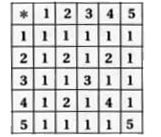In each of the following cases , state whether the function is one - one , onto or bijective. Justify your answer.
f:R→R defined by f(x) = 3−4x. Solution in Gujrati
The correct Answer is:f is onto
Step by step video, text & image solution for In each of the following cases , state whether the function is one - one , onto or bijective. Justify your answer. f : R rarr R defined by f(x) = 3-4x. by Maths experts to help you in doubts & scoring excellent marks in Class 12 exams.
Updated on:21/07/2023Topper's Solved these Questions
- RELATIONS AND FUNCTIONS Book:KUMAR PRAKASHANChapter:RELATIONS AND FUNCTIONS Exercise:EXERCISE 1.3
Explore 29 Videos
- RELATIONS AND FUNCTIONS Book:KUMAR PRAKASHANChapter:RELATIONS AND FUNCTIONS Exercise:EXERCISE 1.4
Explore 25 Videos
- RELATIONS AND FUNCTIONS Book:KUMAR PRAKASHANChapter:RELATIONS AND FUNCTIONS Exercise:Practice Paper - 1 (Section - D)
Explore 2 Videos
- PROBABILITYBook:KUMAR PRAKASHANChapter:PROBABILITYExercise:Practice Paper - 13 (Section - D (Answer the following questions))
Explore 2 Videos
- THREE DIMENSIONAL GEOMETRYBook:KUMAR PRAKASHANChapter:THREE DIMENSIONAL GEOMETRYExercise:PRACTICE PAPER -11
Explore 16 Videos
Similar Questions
Let f:{1,3,4}→{1,2,5}andg:{1,2,5}→{1,3} be given by f={(1,2),(3,5),(4,1)andg{(1,3),(2,3),(5,1)} . Write down gof.
View SolutionConsider a binary operation ∗ on the set {1,2,3,4,5} given by the following multiplication table.
(i) Compute (2*3)*4and2*(3*4)
(ii) Is ∗ commutative ?
(iii) Compute (2*3)*(4*5)
(Hint: use the following table )

View SolutionLet : f:N→N be defined by f(n)={n+12 if n is oddn2 if n is even for all n∈N .
State whether the function f is bijective . Justify your answer.
View SolutionIn a game, a man wins a rupee for a six and loses a rupee for any other number when a fair die is thrown. The man decided to throw a die thrice but to quit as and when he gets a six. Find the expected value of the amount he wins/loses.
View SolutionFind the direction cosines of a line which makes equal angles with the coordinate axes.
View SolutionIn each of the following cases, state whether the function is one-one, onto or bijective. Justify your answer.
(i) f:R→R,defined by f(x)=3−4x
(ii) f:R→R,defined by f(x)=1+x2
View Solutionनिम्नलिखित में से प्रत्येक स्थिति में बतलाइए कि क्या दिए हुए फलन एकैकी, आच्छादक अथवा एकैकी आच्छादी (bijective) हैं। अपने उत्तर का औचित्य भी बतलाइए।
(i) f(x)=3−4x द्वारा परिभाषित फलन f:R→R है।
(ii) f(x)=1+x2 द्वारा परिभाषित फलन f:R→R है।
View SolutionIn each of the following cases state whether the functions is bijective or not. Justify your answer:
f:R→Rdef∈edbyf(x)=2x+1
View SolutionIn each of the following cases state whether the functions is bijective or not. Justify your answer:
f:R→R defined by f(x)=3−4x2
View Solutionनिम्नलिखित में से प्रत्येक स्थिति में बताइए कि क्या दिये हुए फलन एकैकी, आच्छादक अथवा आच्छादी (bijective) हैं। अपने उत्तर का औचित्य भी बताइए :
(a) f(x)=3−4x द्वारा परिभाषित फलन f:R→R है।
(b) f(x)=x2+1 द्वारा परिभाषित फलन f:R→R है।
View SolutionIn each of the following cases, state whether the function is one-one onto or bijective. Justify your answwer.
(i)f:R→R defined by f(x)=3−4x
(ii) f:R→R defined by f(x)=1+x2
View SolutionIn each of the following cases, state whether the function is one-one onto or bijective. Justify your answwer.
(i)f:R→R defined by f(x)=3−4x
(ii) f:R→R defined by f(x)=1+x2
View SolutionIn each of the following cases, state whether the function is one-one, onto or bijective. Justify your answer.
(i)f:R→R defined by f(x)=3−4x
(ii) f:R→R defined by f(x)=1+x2
View SolutionIn each of the following cases, state whether the function is one-one onto or bijective. Justify your answwer.
(i)f:R→R defined by f(x)=3−4x
(ii) f:R→R defined by f(x)=1+x2
View SolutionIn each of the following cases, state whether the function is one-one, onto or bijective. Justify your answer.(i) f:R→R,defined by f(x)=34x(ii) f:R→R,defined by f(x)=1+x2
View Solution
